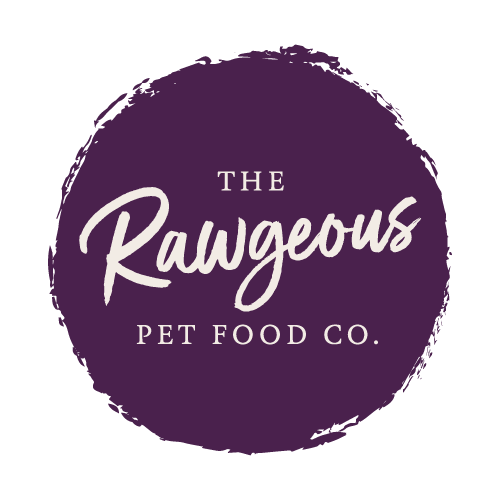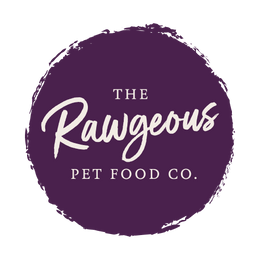Solving Allergy Issues In Dogs
Dogs suffering from allergies make up 30-40% of my consultations. Not only this, I have gone down this road with my own dog, Khaleesi, a Dobermann who is creeping up to 7 years of age now (although you couldn't tell).
I cannot say the signs were subtle; she practically painted my balcony at university in the middle of the night, every night for months whilst we went back and forth to the vet. In hindsight, knowing what I know now; the vet’s recommendations and treatment plan was the worst thing we could have done. Constant rounds of steroids and antibiotics just left me with an empty wallet and an unhappy dog… who still itched and had runny poos all day. I don't think she had a solid poo during puppyhood and things only turned around when we switched to raw. Alas, this was not the end of my journey.

Once we started feeding DIY raw she passed somewhat solid poo. I say ‘’somewhat’’ because you couldn't pick them up properly off the grass but my backyard didn't look like someone had fallen over with a cup of chocolate milkshake. We were making ‘’progress’’.
Looking back, we didn't do an elimination diet properly and that's why it took us years to find out exactly what she was allergic to. We had such limited options but after a while, we managed to succeed in a full 8 weeks without accidentally giving her a lamb chew or beef trachea and eventually got to the bottom of things. It turns out she's quite allergic to most proteins including lamb and chicken! You’d laugh if you knew how long I sat there feeding her lamb meals wondering ‘’why does she still have allergy lumps on her head’’.
Raw feeding wasn’t very popular back then and only a couple of DIY brands existed but none of them really shared much useful information about how to treat different ailments. The wealth of knowledge out there now is amazing and hopefully, after reading this, no one will have to go through what I did.
What is an allergy?
An allergy is an immune-mediated reaction by your dog’s body in response to an offending food and/or substance, called an allergen. Unfortunately, it is estimated that up to 40% of dogs will suffer from some kind of allergy during their lifetime. Allergies are different from intolerances but the symptoms can be very similar! With a food intolerance, there is no ‘’allergic reaction’’ but there can be varying degrees of digestive upset.
Unlike humans, diagnosing the source of allergies for dogs can be very tricky. This is because the symptoms can overlap with those of other illnesses and getting to the bottom of what's causing your dog’s troubles can be multifaceted.
Below, we will briefly discuss the types of allergies, the symptoms and some potential solutions.
Firstly, does your dog have allergies?
Common symptoms include:
- Localised itching (in one place)
- Generalised itching (all over)
- Sneezing
- Wheezing
- Coughing
- Diarrhea
- Runny nose
- Discharge from the eyes
- Paw licking
- Ear scratching
- Recurring infections
The most common symptom in dogs with allergies is ‘’atopic dermatitis’’ which is inflammation of the skin.
What is my dog actually allergic to?
Environmental allergies
Environmental allergies are very common in dogs and can be triggered by things such as tree pollens, grass pollens, mold and dust. Some types of human cleaning and laundry products can cause allergy symptoms in dogs so this should be taken into consideration if all other suspects have been proven innocent. This type of allergy is usually seasonal (like hayfever in humans). Typically, environmental allergies are inhalent but contact with some substances can cause inflammation of the skin. Can we suggest what to do or what to take for these type of allergies.
Flea bite allergies
These types of allergies are usually an inflammatory response caused by a flea bite. The reaction is caused by flea saliva and is actually the most common allergen found in dogs, with just one bite having the potential to cause varying symptoms from slight itching to severe reactions that require veterinary care. One of the infinitely annoying things about fleas is that this can sometimes be a hard allergy to diagnose because one flea can jump on, bite, and jump off again without anyone noticing. This one bite can then have lasting effects and cause itching for weeks without any sign of the perpetrator.
Food allergies
An actual food allergy, where the dog’s immune system reacts to an allergen found in food is quite rare and is often confused with ‘’sensitivities’’. This type of allergy only accounts for 10% of total reactions in dogs. That being said, food definitely needs to be considered when tackling allergy symptoms in pets. Diagnosing a food allergy can be difficult as symptoms often mimic those of environmental allergies. The most common food allergens are beef, lamb, chicken and wheat. An allergic reaction to food will more commonly cause skin itchiness and/or swelling in some areas as opposed to gastrointestinal problems but this isnt always the case.
Diagnosing allergies
Besides your dog’s insatiable need to scratch themselves, and the stress this puts on them and their caregivers; diagnosing allergies requires a lot of patience.
Medical and behavioural conditions such as some skin mites or compulsive self-soothing need to be ruled out before more invasive and time-consuming methods are applied.
Food allergies can only be accurately diagnosed with food trials. This is where a very strict diet of certain ingredients is fed for a certain period of time, followed by ‘’challenge meals’’ with potential offenders. If all symptoms subside during the trial, you can be pretty sure it is a food allergy and then the work is put in to determine what ingredient it is.
For an environmental allergy, blood tests are common practice. Customised skin tests are also sometimes used. Can we mention that allergy testing is just a point in time? I have noticed people saying they are allergic to chicken but the test was done when they were on Kibble. They also send me long lists of red foods including veg and meats etc and you know they were not natural tests?
Treating allergies in dogs
Food allergies
In my years practising as a pet nutritionist, my first port of call for all allergic symptoms is to promote a fresh, whole-food diet that is complete and balanced which takes into account the potential for food allergies.
This would mean starting a diet using novel, single protein sources. Almost all dogs do well on venison and duck, and then you can start to introduce other single protein meals. The same principal applies with treats as well. All Rawgeous Pet Food meals are complete and balanced, and are created with nutrient dense ingredients to promote a healthy immune system. A healthy immune system is vital for dogs that are suffering from an immune-mediated allergic response.
A mistake I made was giving a variety of treats during an elimination diet and not realising that this was causing a reaction. Ensure you only offer your dog their specific meals and if you are giving them treats, make sure they are single ingredients and the right meat!
Symptoms from food allergies can take up to 8 weeks to subside so stick with it.
Flea allergies
We only promote natural products and many brands offer natural flea repellents. One of our personal favourites is BIOSPOTIX which can be found at most major retailers.
Environmental allergies
If your dog is unlucky enough to suffer from environmental allergies then avoidance is a good route to take. This could mean avoiding certain fields that cause flare ups or changing your laundry conditioner.
Some useful tips for helping reduce environmental allergy symptoms include;
- Medicated shampoos
- Skin creams and oils
- Supplements such as bovine colostrum, probiotics and omega 3 fatty acids
- Cleaning paws and belly after walks
- Over the counter antihistamines
As someone who has a dog with allergies, I know how frustrating it can be. However, with the right treatment plan and some patience; your best friend will be back to living a normal, itch-free life in no time.
For more tips on transitioning to Raw food, Click here.



